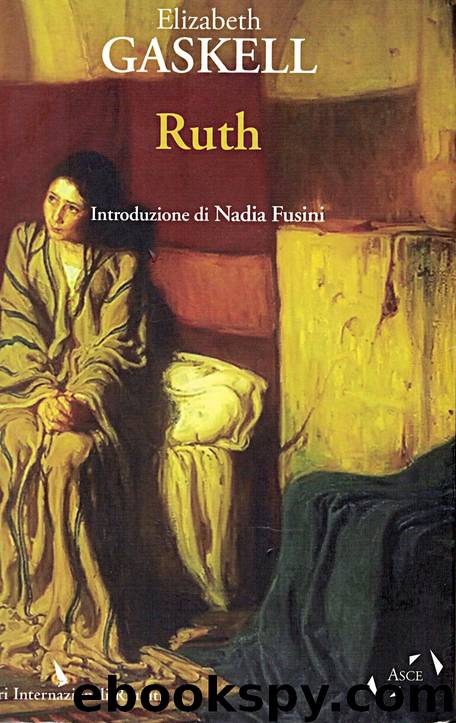


Throughout Ruth, Gaskell suggests that more benefit would be derived from rehabilitation within the community itself.

Reform was available via female penitentiaries, quarantined as if contagious in institutions away from society. Dismissed as outcasts, a downward spiral would ensue ultimately to suicide. The typical ‘fallen woman’ narrative was weighed down by suffering, warranted as an inevitable consequence of tainting of moral character. The ideal Victorian woman conformed to the ‘Angel of the House’ archetype while those who engaged in sexual activity outside marriage were ‘fallen women’, irredeemable until death. In Henry Mayhew’s London Labour and the London Poor, Bracebridge Hemyng claimed that ‘literally every woman who yields to her passions and loses her virtue is a prostitute’, placing any sort of sexual transgression within the term’s boundaries. The ‘great social evil’ of the time was prostitution, becoming a public health issue by the end of the Victorian era. The religious sector, particularly the Anglican Church, had a powerful and ubiquitous influence on politics and society therefore, many values were rooted in Christian beliefs.

At the time Ruth was published, Victorian society was built upon a foundation of a strict set of moral codes that commanded dignity and restraint – including sexual repression – in the conduct of its people. Throughout the novel, there seems to be an intertwining relationship between illness and morality, from the notion that lacking in the latter can manifest in the physical body to the treatment of moral illnesses as communicable diseases.Įlizabeth Gaskell was conscious of the risk she was taking in depicting Ruth in such a way that shed light on her identity beyond the crude label of ‘fallen woman’. Challenging the typical ‘fallen woman’ narrative, her sympathetic portrayal of the eponymous heroine caused a huge divide in opinion, disrupting and questioning the traditional values and beliefs held in society. Elizabeth Gaskell explored these issues of morality – the loss and redemption of – in her English social novel, Ruth. Another among the others – now obsolete – presents it as a ‘bad moral quality, condition, or character.’ Illness was often used as a measure of morality, with the perception that bad morals predisposed to illness and could be contagious like a disease. The meaning most immediate to our present understanding would be a ‘bad/unhealthy condition of the body and mind’. The term ‘illness’ draws up several definitions in the Oxford English Dictionary.


 0 kommentar(er)
0 kommentar(er)
